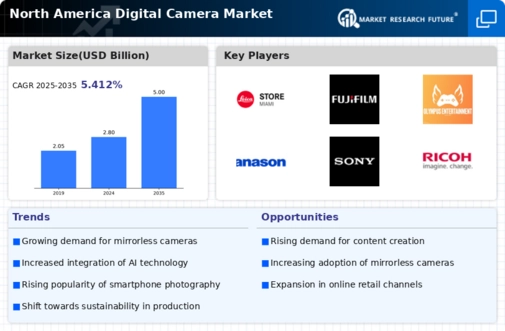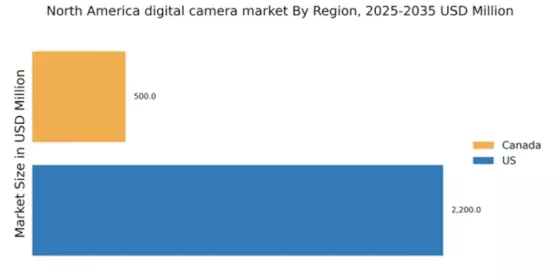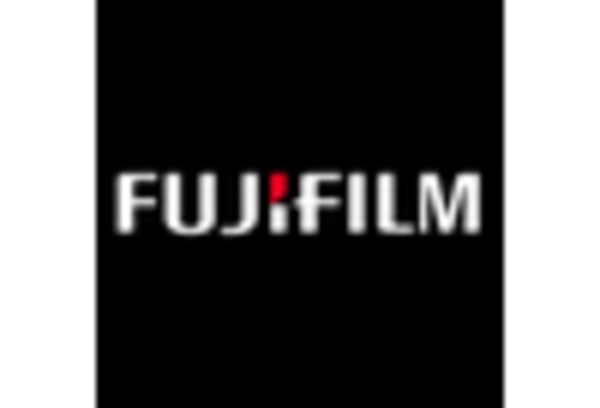The digital camera market in North America is characterized by a competitive landscape that is both dynamic and multifaceted. Key growth drivers include advancements in imaging technology, the increasing popularity of content creation, and a growing demand for high-quality photography among both amateur and professional users. Major players such as Canon (Japan), Nikon (Japan), and Sony (Japan) are strategically positioned to leverage these trends. Canon (Japan) focuses on innovation and product diversification, particularly in mirrorless camera systems, while Nikon (Japan) emphasizes enhancing its imaging technology and expanding its lens offerings. Sony (Japan), on the other hand, is heavily invested in digital transformation and AI integration, which positions it favorably in the competitive environment, as these strategies collectively enhance product appeal and market reach.
The business tactics employed by these companies reflect a concerted effort to optimize supply chains and localize manufacturing. The market structure appears moderately fragmented, with several key players exerting influence over various segments. This fragmentation allows for niche players to thrive, while the collective strength of major companies drives innovation and competitive pricing strategies. The interplay between established brands and emerging competitors fosters a vibrant market atmosphere, where agility and responsiveness to consumer trends are paramount.
In October 2025, Canon (Japan) announced the launch of its latest mirrorless camera, which features advanced autofocus capabilities and enhanced low-light performance. This strategic move is significant as it not only reinforces Canon's commitment to innovation but also addresses the growing demand for high-performance cameras among content creators. By introducing cutting-edge technology, Canon (Japan) aims to capture a larger share of the market, particularly among professional photographers and videographers.
In September 2025, Nikon (Japan) unveiled a new line of lenses designed specifically for its mirrorless camera systems. This initiative is crucial as it enhances Nikon's product ecosystem, encouraging existing users to invest further in their camera systems. By expanding its lens offerings, Nikon (Japan) strengthens its competitive position and appeals to a broader audience, including enthusiasts and professionals seeking versatility in their photography.
In August 2025, Sony (Japan) launched a subscription service for its camera users, providing access to exclusive content, tutorials, and software updates. This strategic action reflects a shift towards creating a community around its products, fostering brand loyalty and enhancing user experience. By integrating digital services with hardware, Sony (Japan) positions itself as a leader in the evolving landscape of digital photography, where user engagement is increasingly vital.
As of November 2025, current competitive trends indicate a strong focus on digitalization, sustainability, and the integration of AI technologies within the digital camera market. Strategic alliances among companies are shaping the landscape, as partnerships enable shared resources and innovation. Looking ahead, competitive differentiation is likely to evolve, moving away from price-based competition towards a focus on technological advancements, product reliability, and enhanced user experiences. This shift underscores the importance of innovation and supply chain efficiency as critical factors for success in the digital camera market.

















Leave a Comment